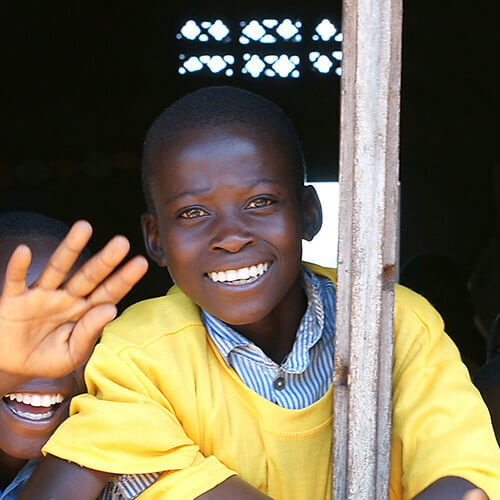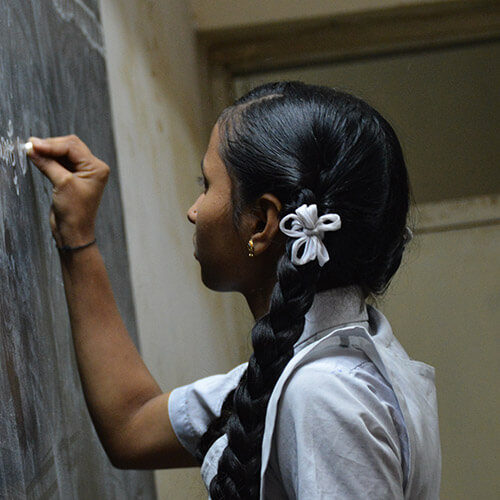Theory of Change – The Impact of Alleviating Malnutrition
In India’s varied landscapes, from busy urban areas to peaceful rural settings, a critical issue persists quietly – child malnutrition. Our NGO is committed to addressing this challenge, focusing on more than meal provision.
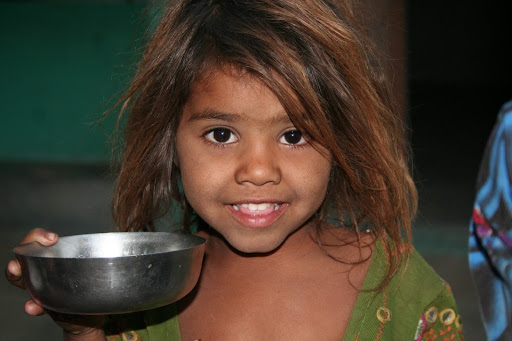
We aim to initiate sustainable change that positively affects communities, economic stability, and future generations. Today, we will explore the significant effects of improving nutrition in children under 6, a crucial age for developmental growth and future potential.
Building Blocks of a Brighter Future
Starts with Nutrition: The initial action is providing adequate nutrition to children, particularly those under six. This is a critical developmental period; proper nutrition is essential for their physical and cognitive growth.
Improvement in Health: Well-nourished children experience better health outcomes. They are less prone to diseases, grow more robustly, and develop more robust immune systems.
Enhanced Educational Performance: Good nutrition is closely linked with cognitive development. Well-nourished children tend to have better concentration, memory, and problem-solving skills, which are crucial for learning.
Increased School Attendance: Healthy children are more likely to attend school regularly. Malnutrition often leads to absenteeism due to illness or lack of energy, so improved nutrition directly contributes to consistent school attendance.
Long-term Educational Benefits: Regular school attendance and improved cognitive abilities lead to better educational achievements. Education is a key factor in breaking the cycle of poverty and malnutrition.
Economic and Social Empowerment: Education opens doors to better job opportunities, leading to economic empowerment. Individuals who escape the cycle of malnutrition and poverty can contribute more effectively to society.
Community and Societal Growth: As individuals thrive, they can uplift their communities. Better education and economic conditions lead to a more informed, healthier, and productive society.
Generational Impact: Perhaps the most profound aspect of the Silent Ripple Effect is its generational reach. The benefits gained by one generation—like breaking the cycle of malnutrition—are passed down, leading to sustained improvement over time.

Early childhood, especially under 6 years, is when the foundations of health, intelligence, and emotional well-being are laid. Proper nutrition during this phase is not just feeding; it’s equipping young minds and bodies with the tools to build a brighter future. It’s an investment with returns that extend far beyond the individual – it uplifts communities and nations.
The Role of the CSR Community
Crucial Role of CSR: The CSR community plays a vital role in the fight against child malnutrition. Their involvement can make a significant difference in the effectiveness and reach of initiatives to alleviate this issue.
Amplifying Efforts: Collaborations between NGOs and CSR initiatives can amplify the impact of efforts to combat malnutrition. These partnerships can leverage the strengths and resources of both sectors, leading to more effective and wide-reaching outcomes.
Collective Force: When CSR initiatives support individual actions, they become part of a more significant joint force. This collaborative approach is more efficient and can bring more substantial and long-lasting change.
Business Participation: CSR allows businesses to engage in social causes actively. By participating in efforts to end child malnutrition, companies can contribute to social good, going beyond their commercial interests.
Shaping Future Generations: Through their CSR activities, businesses can directly influence the health, education, and empowerment of younger generations. This helps create a healthier society and nurtures a more educated and capable future workforce.
Beyond Financial Support: CSR involvement is not just about financial contributions. It can also mean providing expertise, human resources, and other resources that can significantly aid in implementing and scaling nutrition programs.
Creating a Sustainable Impact: CSR partnerships can help develop sustainable solutions for malnutrition. These collaborations can lead to the development of long-term strategies that address immediate nutritional needs and aim to eradicate the root causes of malnutrition.
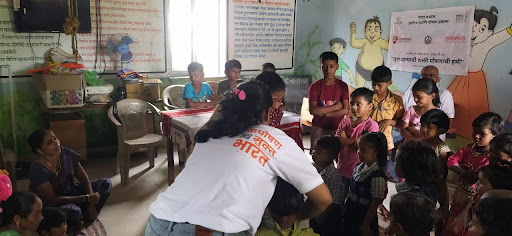
Our Approach: Nourishing Change
Our approach is holistic. We don’t just focus on the meal; we aim to nourish the mind, body, and soul. Our initiatives create a nurturing environment for children, providing them with the nutrition they need and the care they deserve.
The Promise of a Nourished Nation
Imagine a nation where every child can reach their full potential. This is not a distant dream but a tangible goal. Every child nourished is a step towards a stronger, more prosperous nation.
Socioeconomic development is a complex journey that is deeply impacted by early childhood malnutrition, particularly in countries like India.
With its vast population and diverse socioeconomic landscape, India grapples with a myriad of challenges ranging from health costs and unemployment to cycles of poverty, gender discrimination and crime. Addressing early childhood malnutrition is critical to unlocking sustainable socioeconomic growth and tackling these pressing social issues.
The Burden of Malnutrition on India’s Socioeconomic Fabric
India bears a heavy burden of malnutrition, particularly among its youngest citizens. The health costs associated with malnutrition are staggering, placing a significant strain on already stretched healthcare systems.
Moreover, malnutrition perpetuates a vicious cycle of poverty, as children who suffer from inadequate nutrition are more likely to face cognitive impairments, educational setbacks, and limited economic opportunities as adults.
Women who are malnourished are likely to play a much smaller role in household decision-making.
Gender Discrimination
Early childhood malnutrition exacerbates gender disparities, with girls often facing higher rates of malnutrition compared to boys due to cultural and societal norms. This perpetuates gender discrimination, limiting the potential of half the population and hindering overall socioeconomic progress.
Crime
Malnutrition has been linked to increased susceptibility to crime, as individuals facing economic hardship may resort to illicit means to survive.
Children who have faced hunger at an early are more likely to commit acts of violence.
The Theory of Change: Nutrition Adequacy, Awareness, and Advocacy
As a non-profit organization tackling early childhood malnutrition, our theory of change rests on three pillars: nutrition adequacy, awareness, and advocacy.
Ensuring children receive adequate nutrition during their crucial developmental years lays the foundation for healthier, more resilient communities.
Simultaneously, raising awareness about the importance of nutrition empowers families to make informed choices and prioritize their children’s well-being. Through advocacy efforts, we strive to mobilize stakeholders, influence policies, and drive systemic change to address the root causes of malnutrition.
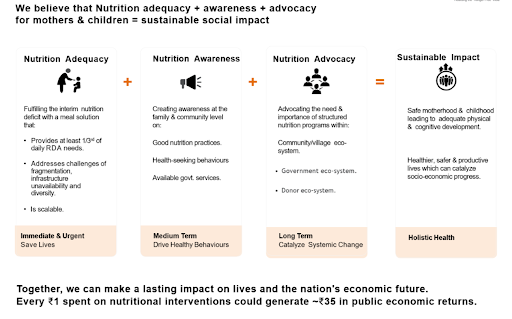
The Impact on Socioeconomic Growth
Investing in nutrition adequacy, awareness, and advocacy yields tangible benefits for socioeconomic growth. By breaking the cycle of malnutrition, we empower individuals to reach their full potential, driving economic productivity and prosperity.
Health costs decrease as the burden of malnutrition-related illnesses diminishes, freeing up resources for other critical areas of development. Furthermore, addressing gender disparities and reducing crime rates contribute to a more inclusive and stable society, fostering an environment conducive to sustained economic growth.
Looking Ahead: A Path to Sustainable Socioeconomic Growth
Tackling early childhood malnutrition is not merely a moral imperative but also an economic necessity. As we work towards a future where every child has the opportunity to thrive, we envision a society where socioeconomic growth is inclusive, equitable, and sustainable. Through our collective efforts in promoting nutrition adequacy, awareness, and advocacy, we pave the way for a brighter, healthier future for all.
In conclusion, the impact of tackling early childhood malnutrition extends far beyond individual well-being, shaping the socioeconomic fabric of nations like India.
By addressing this pressing issue through a holistic approach, we can unlock the full potential of communities, driving sustainable socioeconomic growth and fostering a more prosperous future for generations to come.


